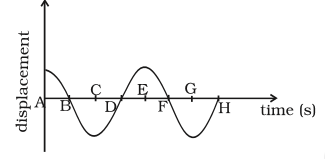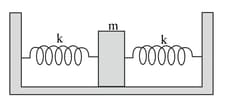NCERT Solutions for Chapter: Oscillations, Exercise 3: VSA
NCERT Physics Solutions for Exercise - NCERT Solutions for Chapter: Oscillations, Exercise 3: VSA
Attempt the practice questions on Chapter 14: Oscillations, Exercise 3: VSA with hints and solutions to strengthen your understanding. NCERT Exemplar Physics - Class 11 solutions are prepared by Experienced Embibe Experts.
Questions from NCERT Solutions for Chapter: Oscillations, Exercise 3: VSA with Hints & Solutions
Displacement versus time curve for a particle executing simple harmonic motion is shown in the figure. Identify the points marked at which
(i) Velocity of the oscillator is zero.
(ii) Speed of the oscillator is maximum.

Two identical springs of spring constant are attached to a block of mass and to fixed supports as shown in the figure. When the mass is displaced from equilibrium position by a distance towards right, find the restoring force.

What are the two basic characteristics of a simple harmonic motion?
When will the motion of a simple pendulum be simple harmonic?
What is the ratio of maximum acceleration to the maximum velocity of a simple harmonic oscillator?
What is the ratio between the distance travelled by the oscillator in one time period and amplitude?
In the given figure, what will be the sign of the velocity of the point , which is the projection of the velocity of the reference particle . is moving in a circle of radius in anticlockwise direction.

Show that for a particle executing S.H.M, velocity and displacement have a phase difference of .
